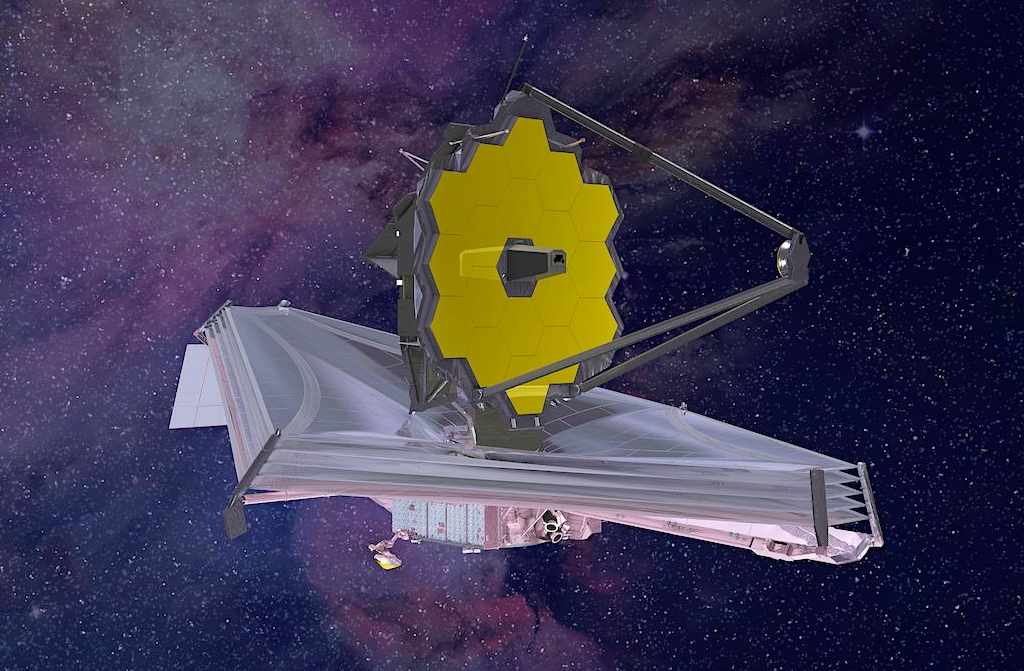

All over the world (amateur) astronomers are looking forward to the first images of the James Webb telescope, the most powerful space telescope of all time. An important step has been taken today: the telescope has finally left planet Earth.
This afternoon at 13:20 Dutch time, the James Webb space telescope was successfully launched. This is about 14 (!!) years later than originally planned. The launch has been delayed many times over the past decade. As the telescope’s development progressed, building the space telescope turned out to be not that easy. The telescope has an enormous size and consists of eighteen separate mirrors that together form one large mirror. A deviation of more than 38 nanometers – one thousandth of the thickness of a human hair – can already cause problems.
Now the space telescope is really on its way. About 26 minutes after launch, James Webb separated from the rocket and continued solo. In four weeks, the observatory will arrive at its final destination, which is about 1.6 million kilometers from our planet. Then it gets really exciting, because that’s where James Webb has to fold out his mirrors. Launching a rocket is ‘business as usual’ at NASA, but unfolding mirrors in space has never been done on such a scale before. The James Webb Space Telescope is expected to be fully operational about six months after launch. The telescope must first cool down in order to use its near-infrared camera without noise.

This is what the James Webb space telescope will look like in four weeks.
James Webb is seen as the spiritual successor to the now more than 30-year-old Hubble telescope. It is not inconceivable that thanks to the James Webb space telescope we will be able to spot the waste products of extraterrestrial life for the first time, such as methane, in the atmosphere of a distant exoplanet. The powerful telescope should also be able to detect the first stars and galaxies that formed shortly after the Big Bang and thus provide more insight into the evolution of the universe. In addition, the telescope will also investigate the formation of stars and planets, open the hunt for Earth-like planets and shed new light on the evolution of galaxies.
Watch the launch of the James Webb Space Telescope below or read our extensive background article with all questions and answers about the telescope.
Source material:
NASA TV & Archive Scientias.nl